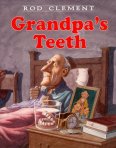Spring has sprung, Easter’s almost here, and it’s time to discuss eggs. Because I have a few children who don’t celebrate Easter, I’m always looking for books about eggs without an Easter bunny hiding inside.
 Thus, another favorite–The Talking Eggs by Robert D. San Souci and illustrated by Jerry Pinkney. The book received the Caldecott Honor in 1990, which was most definitely deserved. While this retelling of a Creole folktale is similar to the Cinderella story, the Louisiana setting, time period, and language set it far apart from the more familiar version. The colorful illustrations filled with detail draw my children’s attention, while I am grateful to have a book with non-white characters on the cover, and characters’ faces that may reflect the ones my children see in the mirror daily.
Thus, another favorite–The Talking Eggs by Robert D. San Souci and illustrated by Jerry Pinkney. The book received the Caldecott Honor in 1990, which was most definitely deserved. While this retelling of a Creole folktale is similar to the Cinderella story, the Louisiana setting, time period, and language set it far apart from the more familiar version. The colorful illustrations filled with detail draw my children’s attention, while I am grateful to have a book with non-white characters on the cover, and characters’ faces that may reflect the ones my children see in the mirror daily.
Blanche and Rose are sisters, who live with their mother in a tired cabin. While Rose turns out to be mean-spirited, just like her mother, Blanche is giving and sweet–and ends up doing the work of all three while the other two relax.
On her way to fetch water, she meets an old auntie who begs for a sip, and Blanche, being the obedient girl she is, provides it for her. But when she does make it home, her mother and sister chastise her for being slow and she runs off. She meets the elderly woman again, is invited back to the old lady’s house, and admonished not to laugh at anything she may see.
So the colorful chickens with their extra legs, the two-headed cow,
 and the old lady who can cook a full meal out of hardly anything, in addition to taking off her head to comb her hair, are strange and wonderful, but Blanche follows the witch’s orders and does not laugh. Her rewards are eggs from the hen house–but only the talking eggs who tell her to take them. When she throws them over her shoulder as she walks home, she receives many lovely surprises.
and the old lady who can cook a full meal out of hardly anything, in addition to taking off her head to comb her hair, are strange and wonderful, but Blanche follows the witch’s orders and does not laugh. Her rewards are eggs from the hen house–but only the talking eggs who tell her to take them. When she throws them over her shoulder as she walks home, she receives many lovely surprises.
And it’s no surprise at all that when Blanche arrives home in new finery, her mother sends her sister to find the old woman and win some goodies of her own.
Nor is it a surprise when Rose utterly fails every task that Blanche sailed through. Suffice it to say, both the mother and Rose get a fitting retribution and Blanche lives happily ever after.
It’s a lovely book that provides opportunities for comparing and contrasting with the Cinderella story. Another activity I’m going to try this year is to put small pieces of paper with words I know my kids can decode in a number of plastic eggs and have them read, record the word on a piece of paper folded in quarters, and then draw a picture for the word.










